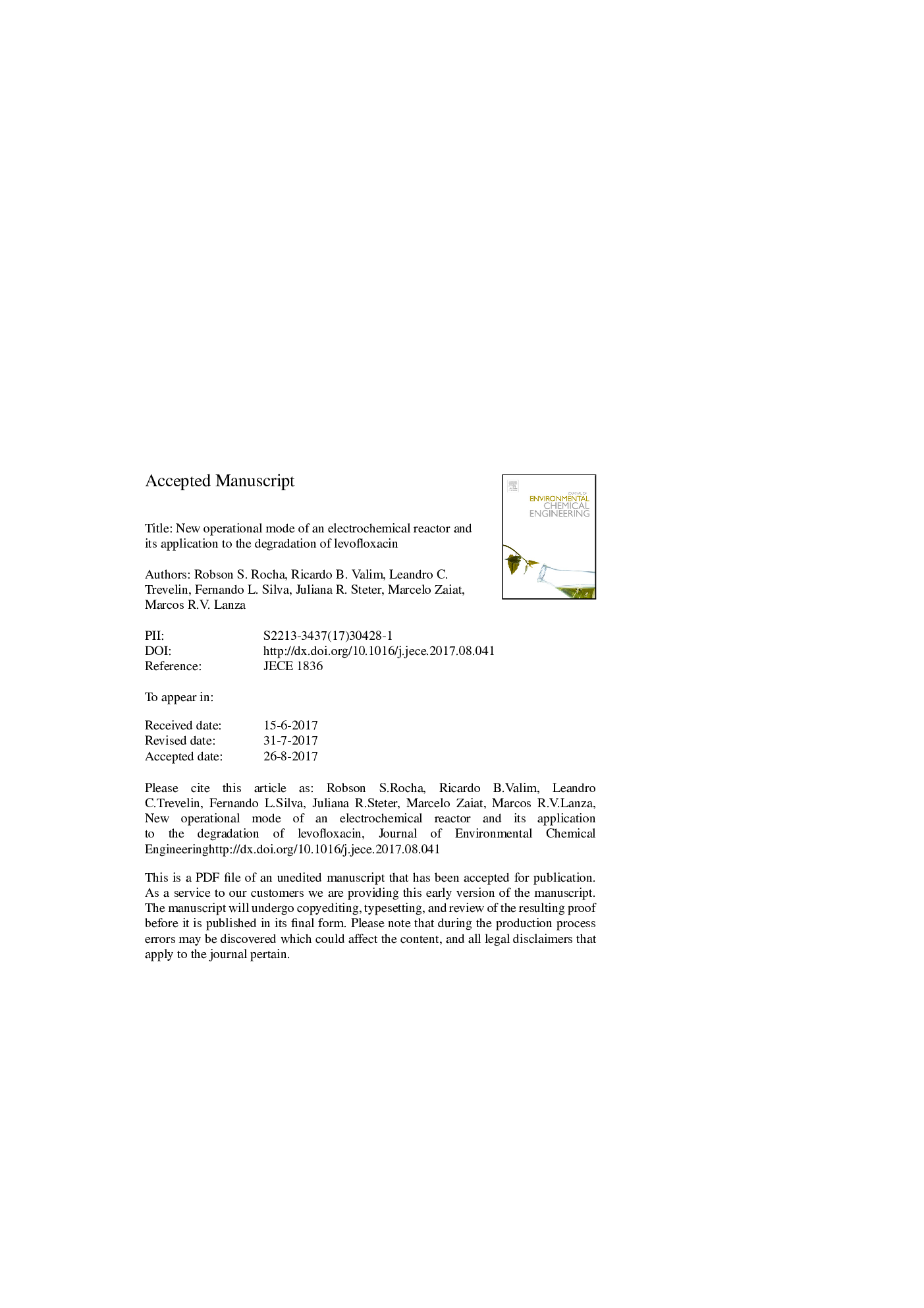| Article ID | Journal | Published Year | Pages | File Type |
|---|---|---|---|---|
| 6664273 | Journal of Environmental Chemical Engineering | 2017 | 26 Pages |
Abstract
The flow-by electrochemical reactor is generally used in batch mode with extended process time in order to achieve high efficiency in the removal of organic contaminant from aqueous solution. Moreover, the batch mode system is inappropriate for the treatment of wastewater in high volume or as a continuous stream. This paper presents a new operational mode for the electrochemical reactor in which the electrolyte passes over the electrodes just once at a reduced flow rate and with high hydraulic retention time. The concentration of hydrogen peroxide generated in the reactor running in the single-pass flow mode attained 10.2 mg Lâ1 cmâ2 in acid medium, a value similar to that obtained previously with the same type of reactor operating in batch mode. In the single-pass mode, the electrochemical reactor showed high rates of removal of the antibiotic levofloxacin (initial 50 mg Lâ1) and organic load (initial 130 mg Lâ1) up to 99 and 86%, respectively, when operated under electro- or photo-Fenton degradation conditions (acid medium with Fe2+ ions; absence or presence of UV irradiation). Degradation of levofloxacin generated high levels of nitrate (up to 4.5 mg Lâ1) and various by-products that could be identified by liquid chromatography-mass spectrometry.
Related Topics
Physical Sciences and Engineering
Chemical Engineering
Chemical Engineering (General)
Authors
Robson S. Rocha, Ricardo B. Valim, Leandro C. Trevelin, Fernando L. Silva, Juliana R. Steter, Marcelo Zaiat, Marcos R.V. Lanza,
